Links to external sources may no longer work as intended. The content may not represent the latest thinking in this area or the Society’s current position on the topic.
Non-equilibrium superconductivity and spintronics
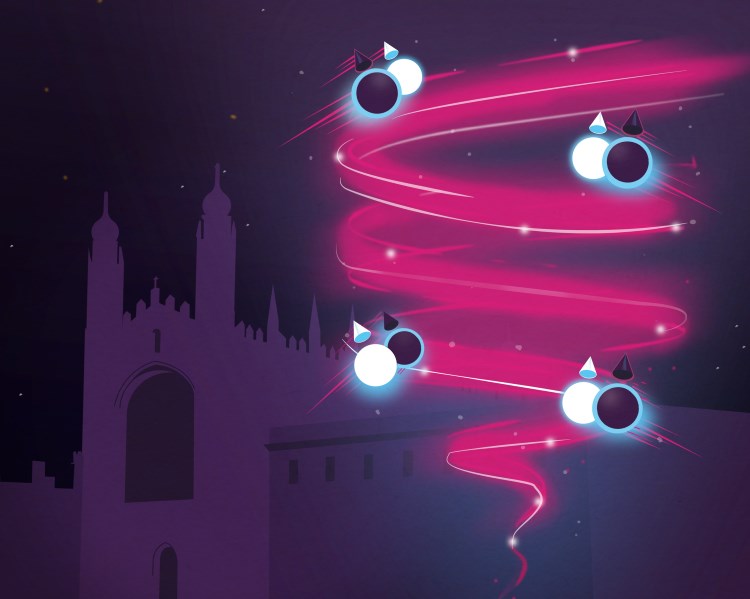
Theo Murphy international scientific meeting organised by Professor Mark Blamire, Dr Chiara Ciccarelli, Professor Matthias Eschrig, Dr Jason Robinson and Professor Lesley Cohen
This meeting will bring together leading researchers in the fields of magnetism and superconductivity to explore new functionality in which spin, charge and superconducting phase coherence can work together. Their discoveries and predictions form the foundation for the field of superconducting spintronics which could eventually be developed as a replacement for large-scale semiconductor-based logic and memory.
Speaker biographies and abstracts are available below. Recorded audio of the presentations will be available on this page after the meeting has taken place. Meeting papers will be published in a future issue of Philosophical Transactions A.
Enquiries: contact the Scientific Programmes team
Organisers
Schedule
Chair
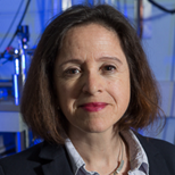
Professor Lesley Cohen, Imperial College London, UK

Professor Lesley Cohen, Imperial College London, UK
Professor Lesley Cohen is a professor of solid state physics studying the fundamental behaviour of materials and devices with unusual electronic, optical, superconducting or magnetic properties for a variety of applications including solid state efficient and environmentally friendly magnetic refrigeration. Over a number of years her group has developed a suite of characterisation tools that have enabled unique insight into the behaviour of materials at low temperatures and high magnetic fields. She has published over 350 journal publications in her areas of interest.
| 09:05 - 09:30 |
Robust superconductivity coexisting with ferromagnetism display unusual behaviour
Proximity coupling across superconductor-ferromagnet bilayers can give rise to the triplet component of the superconducting condensate. Superconductivity and ferromagnetism have been reported to coexist in a Ni/Bi bilayer system. Thus spin polarised triplet supercurrent in ferromagnetic-superconducting Josephson junctions can be expected. The Moodera group has investigated the complex and rich behaviour of this phenomenon in bilayers of Ni/Ga and Ni/Bi systems, including Josephson and quasiparticle tunnelling. Ni/Ga as well as Ni/Bi bilayer systems show unusual superconductivity, with high Tc that can co-exist with ferromagnetism. Tunnelling spectroscopy studies at low temperatures show the presence of three superconducting energy gaps in the bilayers, attributable to surface, interface and bulk states within the bilayers. Ni layers, ranging from 0.8 to 6nm thick, confirmed to be ferromagnetic by the magnetisation studies while spin polarised tunnelling studies revealed that the tunnelling electrons coming from the Ni surface were spin polarised and simultaneously displayed superconducting gap, supporting the co-existence of SC and FM. The interplay of SC and FM with the presence of spin polarised carriers in such bilayer system could be a strong case for triplet pairing. In addition, the observed Josephson current could be spin polarised. Interestingly, the superconductivity in the Ni/Bi bilayer is expected to be topological. The occurrence of zero bias conductance may reflect odd-frequency symmetry in the superconducting condensate, supporting the presence of a non-zero component associated with triplet pair superconductivity insensitive to disorder. Jagadeesh Moodera will present this ongoing work leaving it open for discussion. This work has been done in collaboration with Madison Sutula, Sebastian Bergeret, Jia Song, Valeria Lauter and Niladri Banerjee. 
Dr Jagadeesh S Moodera, Massachusetts Institute of Technology, USA

Dr Jagadeesh S Moodera, Massachusetts Institute of Technology, USADr Jagadeesh Moodera is a senior research scientist and group leader at the physics department at MIT, USA. Jagadeesh is also a Distinguished Visiting Professor at the IQC, University of Waterloo; a Visiting Professor at the Applied Physics Department, Technical University of Eindhoven; a Distinguished Institute Professor at IIT Madras; and a Distinguished Foreign Scientist at NPL, Delhi. Jagadeesh has served on the Board of External Experts for national research programs in France, Holland, England and Ireland and has been elected a Fellow of the American Physical Society. He is also the recipient of several awards: IBM and TDK Research Awards, and the Oliver E. Buckley Condensed Matter Prize from the American Physical Society. Jagadeesh’s research interest lies in: 1) manipulating electron spin in solids-spin tunnelling, spin filtering and interfacial exchange coupling; 2) molecular spintronics: towards molecular-scale spin memory; 3) ferromagnet/superconductor heterostructure towards superconducting spintronics; 4) quantum transport in topological driven systems and heterostructures: atomic scale interface exchange phenomena; atomically resolved interface chemical/physical/magnetic studies; electrical transport; and 5) the search for Majorana bound states in unconventional superconductors, and interactions. |
|---|---|
| 09:45 - 10:15 |
Transport properties of topological superconducting hybrid structures
Dirac materials with strong spin-orbit interaction have been shown to generate large surface spin accumulations in response to applied currents. Such materials have, in addition, been demonstrated to exert spin-orbit torques on adjacent ferromagnetic structures. This magnetoelectric effect in these materials is strong due to the efficient spin-momentum locking. In heterostructures consisting of superconductors and three-dimensional superconductors, this spin-momentum locking leads to an induced unconventional superconductivity that may be useful for superconducting spintronics. Here, Cecilia Holmqvist investigates theoretically the quantum transport properties of a ballistic junction consisting of two topological superconductors coupled over a quantum dot that is coupled to a ferromagnet. The spin-orbit torques acting on the ferromagnet are examined and are shown to depend strongly on the magnetisation direction relative to the current direction. 
Dr Cecilia Holmqvist, Linnaeus University, Sweden

Dr Cecilia Holmqvist, Linnaeus University, SwedenCecilia Holmqvist is a postdoctoral research fellow at Linnaeus University, Sweden. She received her PhD at Chalmers University of Technology, Sweden, and subsequently was a postdoc at Konstanz University, Germany, and at the Norwegian University of Science and Technology, Norway. Her research interests include non-equilibrium charge and spin transport as well as noise in superconducting hybrid structures, in particular how Andreev states may interact with the dynamics of a nanomagnet. Her research interests also include spin-orbit torques and magnetisation dynamics generated by materials with strong spin-orbit coupling such as normal metals and topological insulators, and spin transport carried by classical spin-wave dynamics, such as spin superfluidity, in ferromagnets and antiferromagnets. |
| 10:30 - 11:00 | Coffee |
| 11:00 - 11:30 |
Magnetic moment manipulation by a superconducting current in Josephson junctions
Recently several mechanisms realising the direct coupling between magnetic moment and Josephson current in S/F/S junctions have been proposed. In such junctions, the ac Josephson effect may generate a magnetic precession providing then a feedback to the current. Magnetic dynamics results in several anomalies of current-phase relations (second harmonic, dissipative current) which are strongly enhanced near the ferromagnetic resonance frequency. The simulations of magnetic moment dynamics show that by applying an electric current pulse, it may be possible to realise the full magnetisation reversal which is quite important for the elaboration of superconducting spintronic devices with low dissipation. 
Professor Alexander Buzdin, University of Bordeaux, France

Professor Alexander Buzdin, University of Bordeaux, FranceAlexander Buzdin is a full professor at the University of Bordeaux in France; since 2004 he has been a senior member of the prestigious Institut Universitaire de France, where he holds the Chair “Physics of Superconductivity”. This year Alexander is the Liverhulme Trust professor at the Material Science Department of Cambridge University. Alexander graduated from Moscow State University and then habilitated in 1986. He worked under the supervision of the Nobel Prize winner Alexey Abrikosov at the Institute for High Pressure Physics of Russian Academy of Science and Argonne National Laboratory. Alexander is the author of more than 250 articles on superconductivity, magnetism and nanophysics. He received the Holweck Medal and Prize in 2013, a joint award by the UK Institute of Physics and the French Physical Society, for his pioneering theoretical studies of superconductor–ferromagnet multilayer systems. |
| 11:45 - 12:15 |
Superconducting field-effect transistors go metal
In their original formulation of superconductivity, the London brothers predicted the exponential suppression of an electrostatic field inside a superconductor over the London penetration depth. Despite a few experiments indicating hints of perturbation induced by electrostatic fields, no clue has been provided so far on the possibility to manipulate conventional superconductors via field-effect. In this talk, Francesco Giazotto will show the evidence of full field-effect control of the supercurrent in all-metallic transistors made of different BCS superconducting films. At a low temperature, the field-effect transistors (FETs) show a monotonic decay of the critical current under increasing electrostatic field up to total quenching for gate voltage values as large as ±40V in titanium-based devices. A similar behaviour, though less pronounced, was observed in aluminum FETs. In addition, Francesco will report on the realisation of Ti-based Dayem bridge Josephson field-effect transistors. The latter show full suppression of IC for gate voltages as low as ±8V. Finally, Francesco will show the behaviour of mesoscopic superconductor-normal metal-superconductor Josephson field-effect transistors that will reveal the impact of electrostatic fields even on proximity metals thereby suggesting that the field effect is universal. Possible electronic and circuital schemes based on this all-metallic technology will be discussed. 
Professor Francesco Giazotto, National Enterprise for Nanoscience and Nanotechnology, Italy

Professor Francesco Giazotto, National Enterprise for Nanoscience and Nanotechnology, ItalyFrancesco Giazotto graduated in Physics, and got a PhD in Physics (cum laude) in 2002 at Scuola Normale Superiore in Pisa. Since 2003 he is a senior scientist at NEST, Istituto Nanoscienze of CNR in Pisa. He was a visiting scientist for various periods from 2003 to 2008 at Aalto University in Helsinki (FI), and in 2011 at University Joseph Fourier in Grenoble (FR). Giazotto coordinates as Principal Investigator (PI) the activities of mesoscopic superconductivity, coherent caloritronics, electronic refrigeration, ultrasensitive quantum magnetometry, superconducting spintronics, and quantum transport in hybrid systems at ultralow temperatures at NEST laboratory. He has co-authored 145 articles in international journals, holds three patents on superconducting nanodevices, and has given 90 invited talks at national and international conferences. His papers have attracted more than 3900 citations and a 5-years h-index of 31 (Google Scholar). He is also referee of European projects and major international scientific journals. Since 2007 Francesco Giazotto has been PI in 10 projects (~4.5 M€), both European and national. For his research activities in the field of thermal transport at the nanoscale he has also achieved an ERC Consolidator Grant in 2013. |
Chair
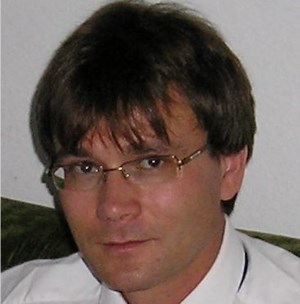
Professor Matthias Eschrig, Royal Holloway, University of London, UK

Professor Matthias Eschrig, Royal Holloway, University of London, UK
Matthias Eschrig is Professor of Physics and leads the Condensed Matter Theory group at Royal Holloway, University of London. He has a PhD from University of Bayreuth (1997) and obtained his Habilitation at Karlsruhe Institute of Technology (2005), after having spent time in USA at Northwestern University and at Argonne National Laboratory. He moved to UK in fall 2010. His research focuses on superconductivity, quantum transport in heterostructures, proximity systems, topological phenomena, as well as quantum many body theory and correlated electron physics. He is one of the leading international theorists on the interaction of superconductors and ferromagnets and co-founded the field of ‘Superconducting Spintronics’. He is Deputy Director of the Hubbard Theory Consortium and member of the Board of Governors of the NSF International Institute on Complex Adaptive Matter. In 2015 he was awarded the Lars Onsager Professorship and Lars Onsager Medal of the Norwegian University of Science and Technology.
| 13:30 - 14:00 |
Voltage-control over a high-field superconducting transition and the superconducting exchange interaction
Jacob Linder’s group predicts two interesting phenomena related to superconductivity in hybrid structures driven out of equilibrium by application of an electric voltage. Firstly, they theoretically demonstrate that superconductivity in thin films can be stabilised in high magnetic fields if the superconductor is driven out of equilibrium by a voltage bias. For realistic material parameters and temperatures, they show that superconductivity is restored in fields many times larger than the Chandrasekhar–Clogston limit. After motivating the effect analytically, they present rigorous numerical calculations to corroborate the findings, and discuss concrete experimental signatures. Secondly, Linder discusses how the magnetic exchange interaction in a spin-valve is influenced by non-equilibrium superconductivity. Linder shows that the sign of the exchange interaction in a spin-valve, determining whether a parallel or antiparallel magnetic configuration is favoured, can be controlled via an electric voltage. This occurs due to an interplay between a non-equilibrium quasiparticle distribution and the presence of spin-polarized Cooper pairs. These findings may be of relevance for spin-based superconducting devices which in practice most likely have to be operated precisely by non-equilibrium effects. 
Professor Jacob Linder, Norwegian University of Science and Technology, Norway

Professor Jacob Linder, Norwegian University of Science and Technology, NorwayJacob Linder is a professor of physics at the Center of Excellence QuSpin, Norwegian University of Science and Technology. He has taught several courses in quantum physics, particle physics, electromagnetism, and classical mechanics. His main research interests lie within the quantum physics of condensed matter, with particular emphasis on magnetic materials, superconducting materials, and Dirac materials. He has co-authored more than 100 peer-reviewed papers in internationally reputable journals such as Physical Review and the Nature family of journals. He lives in Trondheim (Norway) with his wife and two daughters. |
|---|---|
| 14:15 - 14:45 |
Comparison of the spin-transfer torque mechanisms in three terminal spin-torque-oscillators
The spin transfer torque is one of the most active field of spintronics due to its potential for use in memory and logic applications. This control can be achieved via a spin polarised current with the mechanism of spin-filtering torque (SFT) or through a pure spin current via the mechanism of spin-orbit torque (SOT). Over the past several years, SOT has gained increased attention due to the new possibilities that it offers for data storage applications. However, the quantification and comparison of both mechanisms’ efficiencies remains uncertain, due to the uncertainty in material parameters needed to quantify the torque. In this work, researchers at NIST compared for the first time the SFT and SOT efficiencies acting on the same nanomagnetic element. To do so, they created 3-terminal spin-torque oscillators (STO) composed of spin-valves (SV) patterned on top of Pt nanowires. The devices are excited either by SFT or by SOT depending on whether the current is applied through the SV or through the Pt wire. By comparing the magnetization dynamics obtained with the different STT mechanisms, they quantify the relative efficiencies of the SOT and SFT in the system as a function of the dimensions of the SV and Pt nanowires. 
Dr Emilie Jué, National Institute of Standards and Technology, USA

Dr Emilie Jué, National Institute of Standards and Technology, USADr Emilie Jué is a research associate in the National Institute of Standards and Technologies within the Spintronics Group. She graduated with a PhD in Physics from the University of Grenoble in 2013 where she studied the current induced domain wall motion in ultrathin materials with high spin-orbit coupling. Her current research interests include spin-orbit torques and spin-torque oscillators. She is an active member of the IEEE society. She has authored and co-authored 10 peer reviewed publications that have been cited over 1000 times. |
| 15:00 - 15:30 | Tea |
| 15:30 - 16:00 |
Ferromagnetic resonance studies of ferromagnets and superconductors
Ferromagnetic resonance is a powerful method to extract information on the magnetic torques, spin damping and magnetic anisotropies. In Chiara Ciccarelli’s group ferromagnetic resonance methods are applied to quantitatively evaluate the spin torques in asymmetric ferromagnets, magnetic insulators and synthetic antiferromagnets. The focus of this talk will be on some recent work where spin pumping experiments are conducted on HM/SC/FM and SC/FM structures (SC=niobium, HM=platinum and FM=permalloy). Ferromagnetic resonance in the permalloy is excited via a waveguide and the damping measured through the superconducting transition temperature of niobium. These results show that while in the SC/FM structures spin pumping is suppressed when the niobium turns superconducting, in the HM/SC/FM structures the presence of platinum leads to an enhanced spin transfer through superconducting niobium with respect to its normal state and even with respect to bare platinum. 
Dr Chiara Ciccarelli, University of Cambridge, UK

Dr Chiara Ciccarelli, University of Cambridge, UKAfter her PhD in 2012, Dr Chiara Ciccarelli got a Junior Research Fellowship at Gonville and Caius College in Cambridge. In 2016 she was awarded a Winton Advanced Research Fellowship by the Cavendish Laboratory and since 2017 she has been a Royal Society University Research Fellow, running her own group on spintronics. |
| 16:15 - 16:45 |
Anomalous Meissner effect in superconductor-ferromagnet proximity systems
In mesoscopic superconducting systems the Meissner response of a superconducting film can be very different from its bulk behaviour. It was theoretically shown that adding a normal metal (N) to a mesoscopic superconductor (S) can lead to a greatly enhanced Meissner screening, opposite to the case of adding a homogeneous ferromagnet (F) which is expected to reduce the screening due to its strong pair-breaking effect. However, a recently developed theory shows that for the S/F case, spontaneous screening currents can appear, generated by the vector-potential of magnetisation near the S/F interface. Using low energy muon spin spectroscopy, which is an exquisite tool to probe the local flux inside a thin film, Michiel Flokstra presents experimental data on various N/S/F type systems and observe enhanced screening due to the addition of a normal metal, as well as clear signatures of the newly predicted electromagnetic proximity effect generated at the S/F interfaces. 
Dr Machiel Flokstra, University of St Andrews, UK

Dr Machiel Flokstra, University of St Andrews, UKMachiel Flokstra is a lead researcher in the Superconductivity and Magnetism group at the University of St Andrews. Machiel’s research interest is focused on exploring the complex interplay between conventional superconductivity and ferromagnetism using a variety of unique measurement techniques, in particular low-energy muon-spin spectroscopy. He did his PhD at Leiden University, under the supervision of Jan Aarts, on proximity effects in superconducting spin-valve structures. |
| 17:00 - 18:00 | Poster session |
Chair
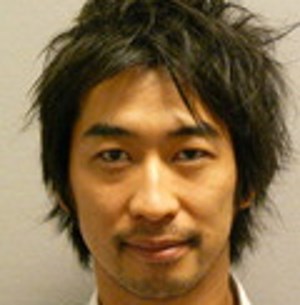
Dr Hidekazu Kurebayashi, University College London, UK

Dr Hidekazu Kurebayashi, University College London, UK
Dr Hidekazu Kurebayashi is Associate Professor in the Electronic & Electric Engineering department at UCL and leads the spintronics group in the London Centre for Nanotechnology. He is an expert of spin transport and spin current physics, probed by a variety of on-chip and cavity microwave techniques to excite spin dynamics. After the completion of his PhD at Cambridge in 2010, he carried on his academic career at the Cavendish Laboratory first as a postdoctoral researcher, and then as JSPS and JST research fellows, before the appointment of a lectureship at UCL in 2013.
| 09:00 - 09:30 |
Universal correspondence between edge spin accumulation and equilibrium spin-currents in nanowires with spin-orbit coupling
In 2003 Rashba himself demonstrated that any system described by the standard two-dimensional Rashba Hamiltonian may support spin currents even in thermodynamical equilibrium. However, he also concluded that such currents are nontransport currents in a customary sense and therefore not detectable. Since then it is a common belief that equilibrium currents cannot lead to a spin accumulation. In this talk Sebastian Bergeret demonstrates that this belief is not necessarily correct. Specifically the interplay between a Zeeman field and the spin-orbit coupling in nanowires leads to an equilibrium spin current that manifests itself in a spin accumulation at the wire ends with a polarisation perpendicular to both fields. This is a universal property that occurs in both the normal and superconducting state, independently of the degree of disorder. The edge spin polarisation transverse to the Zeeman field is strongly enhanced in the superconducting state when the Zeeman energy is of the order of the superconducting gap. This hitherto unknown transverse magnetic susceptibility can be much larger than the longitudinal one, and hence it drastically changes the paramagnetic response of the wire. 
Dr Sebastian Bergeret Material Physics Center (CFM-CSIC), Spain

Dr Sebastian Bergeret Material Physics Center (CFM-CSIC), SpainSebastian Bergeret is the head of the Mesoscopic Physics Group at the Material Physics Center in San Sebastian, Spain. His research field is the theoretical study of transport properties of nanostructures, focusing mainly on superconducting systems. Sebastian’s works provided significant insights on superconductivity in hybrid systems and has led to verifiable predictions. In particular, his works on odd-triplet superconductivity, and more recently on non-equilibrium and spin-orbit coupling in superconductors has sparked an intense research activity in the field and opened the door for spin-based applications of superconducting devices. |
|---|---|
| 09:45 - 10:15 |
Thermoelectric effects in superconductor-ferromagnet structures
Detlef Beckmann covers the experimental observation of spin-dependent thermoelectric effects in superconductor-ferromagnet tunnel junctions in high magnetic fields. The thermoelectric signals are due to a spin-dependent lifting of particle-hole symmetry on the energy scale of the superconducting gap. Due to the small energy scale, the thermoelectric effects can be quite large, and a maximum Seebeck coefficient of about 100 µV/K can be inferred from the data. The thermoelectric signals can be further enhanced by an exchange splitting induced by the proximity effect with a ferromagnetic insulator. The results directly prove the coupling of spin and heat transport in high-field superconductors, which also leads to nonlocal thermoelectric effects in multiterminal devices where several ferromagnetic wires are attached to a single superconducting wire via tunnel junctions. In these structures, heating one of the ferromagnetic wires leads to a nonlocal thermoelectric current in a remote wire, over distances of the order of 10 µm. 
Professor Detlef Beckmann, Karlsruhe Institute of Technology, Germany

Professor Detlef Beckmann, Karlsruhe Institute of Technology, GermanyDetlef Beckmann obtained his PhD in Karlsruhe in 1997 on Fermi surface studies of organic superconductors. Since 1999, he has been a staff scientist at the Institute of Nanotechnology of the Karlsruhe Institute of Technology (KIT), where he has worked on molecular electronics, mesoscopic physics and superconductor-ferromagnet hybrid structures. In these structures, the competition of magnetism and superconductivity leads to new transport phenomena such as nonlocal Andreev reflection and triplet supercurrents. Recently, his work has been focussed on nonequilibrium transport in high-field superconductors, where coupled spin and heat transport leads to very long spin relaxation times and large thermoelectric phenomena. |
| 10:30 - 11:00 | Coffee |
| 11:00 - 11:30 |
Generation of pure superconducting spin current in magnetic heterostructures via non-locally induced magnetism
The researchers of RHUL propose a mechanism for the generation of pure superconducting spin-current carried by equal-spin triplet Cooper pairs in a superconductor (S) sandwiched between a ferromagnet (F) and a normal metal (Nso) with intrinsic spin-orbit coupling. They show that in the presence of Landau Fermi-liquid interactions the superconducting proximity effect can induce non-locally a ferromagnetic exchange field in the normal layer, which disappears above the superconducting transition temperature of the structure. The internal Landau Fermi-liquid exchange field leads to the onset of a spin supercurrent associated with the generation of long-range spin-triplet superconducting correlations in the trilayer. They demonstrate that the magnitude of the spin supercurrent as well as the induced magnetic order in the Nso layer depends critically on the superconducting proximity effect between the S layer and the F and Nso layers and the magnitude of the relevant Landau Fermi-liquid interaction parameter. Their results demonstrate the crucial role of Landau Fermi-liquid interaction in combination with spin-orbit coupling for the creation of spin supercurrent in superconducting spintronics. 
Dr Xavier Montiel, Royal Holloway, University of London, UK

Dr Xavier Montiel, Royal Holloway, University of London, UKDr Xavier Montiel is currently a post-doctoral research assistant in the Physics department in Royal Holloway, University of London. He is working on the microscopic theory which describes the thermodynamic, electronic and transport properties of the superconducting multilayers for superconducting spintronics. He has calculated the stabilization of spin current in superconducting heterostructure exhibiting spin-orbit coupling and Fermi Liquid interaction. Before this position, Xavier was a post-doc in CEA Saclay, France, where he worked on the theoretical description of the pseudogap phase of Cuprate Superconductors. He was a post-doc at the International Institute of Physics in Natal, Brazil, where he worked on the spin-liquid phase in Heavy Fermion compounds. He obtained his PhD at the University of Bordeaux on the proximity effect between Superconductor and Ferromagnet. |
| 11:45 - 12:15 |
Magnetoelectric effects in S/F hybrids and Josephson detection of magnetisation dynamics
It is demonstrated that the hybrid structures consisting of superconductors and spin-textured ferromagnets exhibit variety of equilibrium magnetoelectric effects originating from coupling between conduction electron spin and supercurrent. It is discussed that in S/F/S Josephson junctions the magnetoelectric effect, which takes the form of the anomalous ground phase shift, is a manifestation of a generic supercurrent-mediated interaction between localised spins that breaks the global inversion symmetry of magnetic moments. The proposed interaction mechanism is capable of removing fundamental degeneracies between topologically distinct magnetic textures. The prospects of using the coupling between the superconducting condensate phase and the magnetisation for Josephson detection of magnetisation dynamics and topology are discussed. In a thin film S/F bilayer geometry as direct so as inverse magnetoelectric effects are predicted. The essence of the direct magnetoelectric effect is that a supercurrent generates spin polarisation in the superconducting film which is non-coplanar with the local ferromagnetic moment. The resulting dissipationless spin torques are discussed. The inverse magnetoelectric effect in such structures is shown to result in the spontaneous phase difference across the magnetic topological defects such as a domain wall and helical spin texture. The possibility to detect domain wall motion through this effect is discussed. 
Dr Irina Bobkova, Institute of Solid State Physics of RAS and Moscow Institute of Physics and Technology, Russia

Dr Irina Bobkova, Institute of Solid State Physics of RAS and Moscow Institute of Physics and Technology, RussiaIrina Bobkova graduated from Moscow Institute of Physics and Technology in 2001 and received her PhD in condensed matter physics from the Institute of Solid State Physics in 2004. Now she is a Senior Researcher at the Institute of Solid State Physics of RAS. Her research interests with published research are in the field of coexistence of superconductivity and magnetism, proximity effects at nanoscale, nonequilibrium superconductivity and low-dissipation spintronics. Also, she is a lecturer at Moscow Institute of Physics and Technology. She teaches courses on electron interactions in metals for master students and on the introduction to group theory for undergraduate students. |
Chair
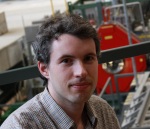
Dr Jason Robinson, University of Cambridge UK

Dr Jason Robinson, University of Cambridge UK
Jason Robinson read Materials Science at Imperial College London (2000-2004), then went on to a PhD at Cambridge University in 2004. In 2011, he was elected to a University Research Fellowship at the Royal Society and in 2015 was appointed a lecturer at Cambridge University then a Readership in 2016 in the Department of Materials Science. He leads a research group that focuses on understanding the fundamental properties of functional materials and spintronics, with major achievements including the discovery of spin-polarised triplet Cooper pairs, which led to the field of superconducting spintronics.
| 13:30 - 14:00 |
Electrically induced and detected Néel vector reversal in a collinear antiferromagnet
Antiferromagnets are enriching spintronics research by many favorable properties that include insensitivity to magnetic fields, neuromorphic memory characteristics, and ultra-fast spin dynamics. Designing memory devices with electrical writing and reading is one of the central topics of antiferromagnetic spintronics. So far, such a combined functionality has been demonstrated via 90° reorientations of the Néel vector generated by the current-induced spin-orbit torque and sensed by the linear-response anisotropic magnetoresistance. In this presentation Joerg Wunderlich will explain the group’s understanding of electrical switching and detection of antiferromagnetic states. He will also show that they can electrically control 180° Néel vector reversals by simply switching the polarity of the writing current. Finally, Joerg will explain how to distinguish two stable states with opposite Néel vector orientations in a collinear antiferromagnet with broken time reversal and spatial inversion symmetries by measuring a second-order magnetoresistance effect. 
Dr Joerg Wunderlich, Hitachi Cambridge Lab, UK, and Institute of Physics of the Academy of Science, Czech Republic

Dr Joerg Wunderlich, Hitachi Cambridge Lab, UK, and Institute of Physics of the Academy of Science, Czech Republic |
|---|---|
| 14:15 - 14:45 |
Phase-controllable Josephson junctions and cryogenic memory
Josephson junctions containing ferromagnetic (F) materials are being developed for use in cryogenic random access memory. In principle, either the critical current amplitude or the ground-state phase difference across the junction could be used to store information. In the Northrop Grumman JMRAM memory architecture, the ferromagnetic junction acts as a passive phase shifter in a SQUID loop that also contains two SIS junctions. Phase control has now been demonstrated in two kinds of Josephson junctions: in a simple spin-valve device containing two ferromagnetic layers and in a more complex multi-layer device that carries spin-triplet supercurrent. In both types of devices, the ground-state phase difference can be controllably switched between 0 and π by reversing the magnetisation direction of one of the magnetic layers in the device. The physical mechanism by which the ground-state phase difference changes, however, is different in the two types of devices. Both types of devices require further optimisation to be suitable for large-scale superconducting memory arrays. This talk will review the physics underlying the behaviour of both types of ferromagnetic Josephson junctions, and discuss progress in optimising devices for use in cryogenic memory. 
Professor Norman Birge, Michigan State University, USA

Professor Norman Birge, Michigan State University, USANorman Birge received his PhD in 1986 from the University of Chicago, studying the glass transition in supercooled liquids. He changed his focus to electronic transport during his post-doctoral work at AT&T Bell Laboratories. He came to Michigan State University in 1988 and has been there ever since, aside from two sabbatical years with the Groupe Quantronique at the CEA Saclay in France. His research has spanned several topics in quantum transport and mesoscopic physics, including 1/f noise and universal conductance fluctuations, dissipative quantum tunneling of defects in metals, electron phase coherence at very low temperatures, the superconducting proximity effect, and nonequilibrium phenomena in metallic systems. His current research focuses on the interplay between superconductivity and ferromagnetism in hybrid structures. |
| 15:00 - 15:30 | Tea |
| 15:30 - 16:00 |
Surface superconducting property proved by pure spin current
The transport properties for the charge and spin currents in a normal metal/superconductor interface have been investigated by using a pure spin current generated in a specially-developed lateral spin valve. Owing to the efficient reduction of the Joule heating, Takashi Kimura’s group were able to observe the temperature and bias-current dependences of the spin absorption propertis in the Cu/Nb bilayer system. From the temperature dependence of the spin signal, the superconducting gap of the Nb was found to open gradually with decreasing the temperature. The group also demonstrated the spin transport through a Nb/Cu/Nb Josephson junction, indicating that Cooper pairs and spin accumulation coexist in the Cu channel. 
Professor Takashi Kimura, Kyushu University, Japan

Professor Takashi Kimura, Kyushu University, JapanProfessor Takashi Kimura has been a Professor in the Physics Department at Kyushu University since 2013. From 2009 to 2013, Takashi was a Professor in Inamori Frontier Center at Kyushu University. Between 2004 and 2008, he was an Assistant Professor in the Institute for Physics at University of Tokyo. From 2002 to 2004, Takashi was a researcher in Riken Frontier System. Takaski received his PhD in Engineering from Osaka University in 2002. |
| 16:15 - 16:45 |
Superconducting quantum-classical information processing systems
Superconducting rapid single flux quantum (RSFQ) logic is now used in radio frequency signal digital receivers. Sophisticated superconducting SFQ-based digital processors and memories are being developed for the next generation energy efficient data centres. Recently, RSFQ and its energy-efficient successor logics were used to realize classical control for quantum processors. Traditionally, control operations are performed at room temperature leading to scalability limitations and long latency in quantum operations. For scalable low-latency qubit control, the classical electronics should located as close to quantum chips as possible. Superconducting SFQ circuits proximally located to the quantum processor can be the technology of choice due to its low power (10-21 Joule to per switching at 20 mK). They can be engineered to produce the minimal back action to qubits. The ability to operate at very high speed (tens of gigahertz clock) opens a way for digitizing and fast processing qubit output data for error correction and generation of qubit control signals. Furthermore, hybrid systems integrating together the quantum and classical processing hardware units are envisioned to enable various application algorithms which typically combine quantum and classical algorithmic modules. The implementation of scalable quantum-classical 3D integrated system extending across multiple temperature stages will be discussed. 
Dr Oleg Mukhanov, HYPRES Inc, USA

Dr Oleg Mukhanov, HYPRES Inc, USAOleg A Mukhanov is Chief Technology Officer at HYPRES, which he joined in 1991 to initiate the development of Rapid Single Flux Quantum (RSFQ) superconductor circuit technology. He obtained his PhD in physics from Moscow State University in 1987 and an MS in electrical engineering (with honors) from Moscow Engineering Physics Institute in 1983. Prior to Hypres, he was a staff scientist in Moscow State University where he co-invented RSFQ technology. At Hypres, Dr Mukhanov has initiated and led many projects on high-performance digital and mixed signal RSFQ circuits for variety of applications including data and signal processors, analog and time to digital converters, which resulted in the first commercial use of superconducting digital electronics – RSFQ-based Digital-RF receivers. Dr Mukhanov authored and co-authored over 170 scientific papers, book chapters and over 20 patents. Dr Mukhanov is a Fellow of IEEE and recipient of The IEEE Award for Continuing and Significant Contributions in the Field of Small Scale Applied Superconductivity. |

